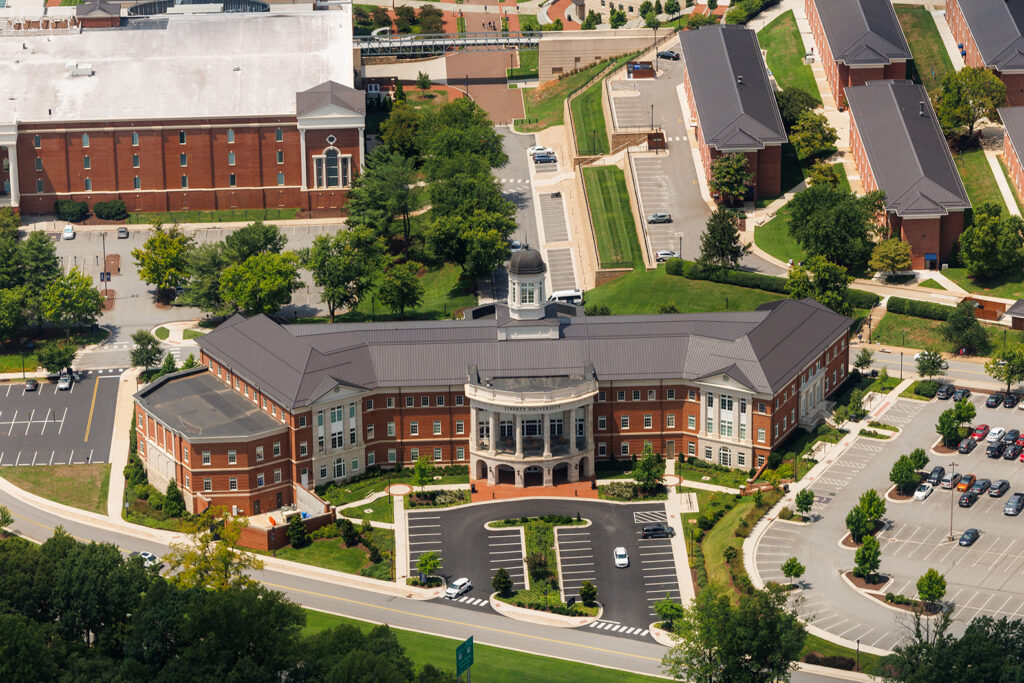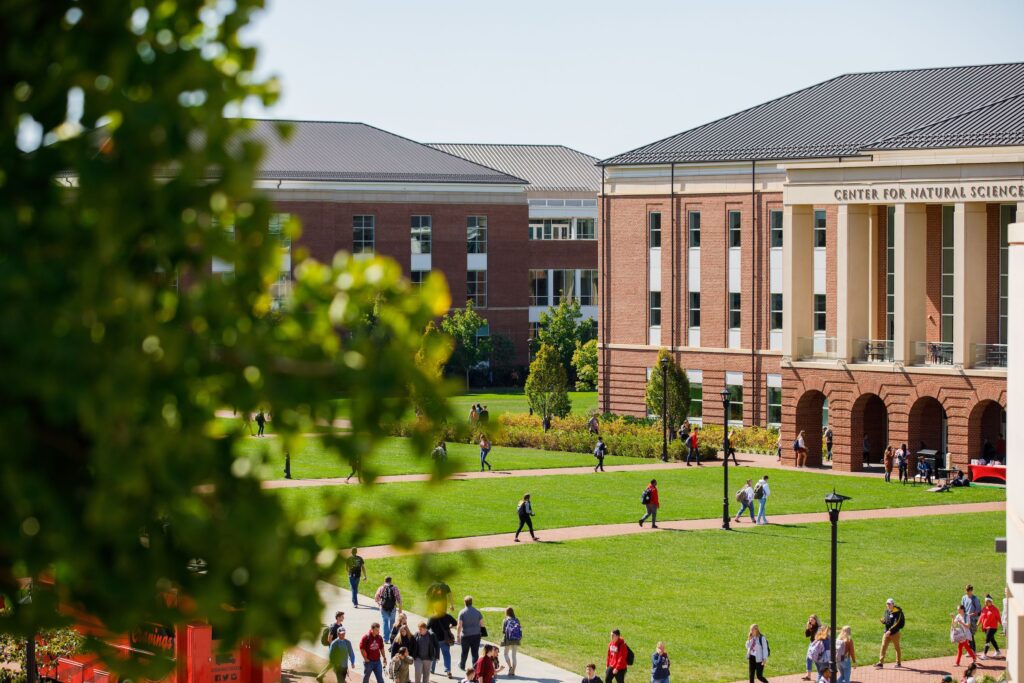Smarter Water Management on Campus:
How Liberty University Reduces Water Waste and Leaks with WaterCompass
Liberty University, located in Lynchburg, Virginia, spans a vast and growing campus, including dormitories, academic buildings, athletic facilities, and infrastructure that supports tens of thousands of students and faculty. With such scale, even small inefficiencies in water use can quickly snowball into significant waste and cost.
Like many institutions with aging infrastructure and shared utility metering, Liberty faced a serious challenge: they simply didn’t know where their water was going.

Challenge: No Visibility, Delayed Response, and Unexplained Spikes
Led by Senior Manager of Utilities & Infrastructure, Stacy Dawson, Liberty’s team was well aware that they had water waste issues — the signs were clear: high bills, recurring leaks, unexplained usage spikes. But pinpointing the source was almost impossible.
- Multiple buildings shared a single city meter, so they couldn’t isolate which structures were overusing water.
- Leak detection was slow and inefficient; unless it was visible, it could go undetected for weeks.
- They received alerts only after the fact, sometimes 24–48 hours after a spike, or worse not until a large utility bill landed.
- They had no baseline of what normal water use looked like across campus buildings, making trend spotting impossible.
The facilities team often had no idea where to start with finding leaks across the campus, and no easy way to prioritize where to send their crews.
Solution: WaterCompass Implementation for Building-Level Visibility and Comparison
In Fall 2024, Liberty deployed 12 WaterCompass flow monitoring devices across dormitories in their south campus region, selecting buildings with similar footprints, infrastructure, and student occupancy to establish comparative benchmarks.
With WaterCompass in place, the university gained real-time, hourly data for each individual building — something they’d never had before.
- Interactive dashboards enabled them to drill down to each building, view usage by the hour, and monitor water patterns over time.
- The Facilities team could now spot anomalies immediately, rather than days later, and address them while minimizing waste, risk, and disruption.
Breakthrough Insight: Dormitory Water Use Discrepancy
Soon after the system went live, the WaterCompass dashboard flagged a clear outlier:
Two dorm buildings — similar in size, building age, and housing almost identical number of students — had very different water use profiles. One was consuming almost twice as much water as the other.
Armed with that data, the facilities team investigated during spring break, when students were away. The root cause? Faulty toilets, specifically leaking flappers and fill valves, were quietly wasting water 24/7.
Once the toilet repairs were made, the results were immediate:
- Water use normalized to match expected daily patterns
- The university saved between $1,000 and $2,000 per week in water costs from just that single building
Expanded Benefits: Beyond the Cost Savings
While the financial savings were compelling, Liberty saw a host of additional operational and strategic benefits:
- Building-Level Comparison and Benchmarking: WaterCompass now enables the team to compare buildings across campus, spotting anomalies, identifying outliers, and confirming whether spikes are seasonal, behavioral, or leak-related.
- Real-Time, Granular Insights: Instead of waiting 24–48 hours, or until the end of the billing cycle, they can now view hourly water use trends, flagging issues the moment they happen.
- Smarter Resource Allocation: With clear visibility into which buildings are underperforming, the facilities team can prioritize work orders and deploy staff more efficiently rather than wasting time chasing unknown problems.
- Water Stewardship + Sustainability Leadership: With this level of insight, Liberty is stepping confidently into the role of a responsible water steward, aligning with environmental goals and making data-backed decisions that preserve both resources and reputation.
What’s Next: Scaling Up and Unlocking New Savings Opportunities
Building on the success of the south campus pilot, Liberty University has greenlit a second phase of WaterCompass deployment, expanding visibility into additional high-use and high-impact areas:
- Athletic fields and irrigation systems
- Locker rooms, showers, and training facilities
- Buildings with water-intensive operations
In addition, Liberty will now begin using WaterCompass to monitor and track water usage for campus chillers, an important step in uncovering non-sewer water use. Since chiller water does not enter the sewage system, Liberty can now quantify and document this usage to reduce sewer-related charges. This initiative is expected to generate approximately $7,000 in annual savings through sewer diversion credits or equivalent cost offsets.
By continuing to expand WaterCompass across campus, Liberty is turning insights into action — not only cutting waste and utility costs but optimizing operations in ways that were never possible before.

Conclusion
By shifting from reactive problem-solving to proactive water intelligence, Liberty University has achieved more than just impressive water cost savings; they’ve transformed how their team manages water and resources, plans repairs, and supports water stewardship.
Smarter water starts with smarter insight and Liberty University is leading the way.

